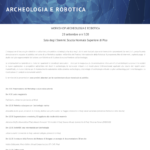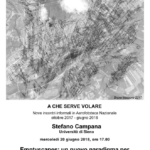Within this framework the present writer was invited by Prof Guaitoli and the CNR in the spring of 2009 to undertake trials in the application of magnetic survey within the area once occupied by the city. The first results demonstrated the high potential of this technique at Veii and it was therefore decided to extend the survey to cover the whole of the plateau, eventually amassing almost 170 ha of magnetic measurements between the spring of 2011 and the winter of 2016.
At the beginning of this work the aims and underpinning archaeological questions were set out as follows:
1.Although a very substantial amount of information has been collected in the last two centuries and a wide range of methodologies have been employed, the plateau of Veii still presents large areas where apparently no information is as yet available. It is expected that better information from these gaps may provide a better understanding of the transformation of the city across time and a better appreciation of post-depositional processes.
2.Magnetic survey – preferably integrated in specific areas by electrical resistance tomography (ETR) and/or ground penetrating radar (GPR) – may provide a detailed layout, or layouts, of Veii across the Iron Age, Etruscan and Roman periods, making it possible to contextualize, integrate and combine this new information with that collected in the past, and thereby to substantially improve our understanding of the topography or the city, better defining its limits, its fortification structures, the location of its gateways, the length and orientation of its streets and the differentiation between built-up and open areas etc.
3.In some cases we expect to have the opportunity to go beyond the concept of ‘wall-following’ and in addition to begin analyzing economic and social patterns within transformations of the urban layout and the expansion and contraction in the topography of economic activity: workshop areas, the religious centre, public areas; agricultural activity and stock areas etc.
4.The implementation of this new approach and array of survey methods may allow us to identify unexpected features that will shed new light on chronological phases that on the basis of current evidence appear to be ‘empty’; for instance in the case of Veii there is at present no evidence of Bronze Age or earlier cultural material having been found.
5.The influence of the environmental background should be further investigated (the geo- and bio-archaeological context) as well as the relationships between the city and the broader landscape across time.

